Integration of Breast Cancer Secretomes with Clinical Data Elucidates Potential Serum Markers for Disease Detection, Diagnosis, and Prognosis
- PMID: 27355404
- PMCID: PMC4927101
- DOI: 10.1371/journal.pone.0158296
Integration of Breast Cancer Secretomes with Clinical Data Elucidates Potential Serum Markers for Disease Detection, Diagnosis, and Prognosis
Abstract
Cancer cells secrete factors that influence adjacent cell behavior and can lead to enhanced proliferation and metastasis. To better understand the role of these factors in oncogenesis and disease progression, estrogen and progesterone receptor positive MCF-7 cells, triple negative breast cancer MDA-MB-231, DT22, and DT28 cells, and MCF-10A non-transformed mammary epithelial cells were grown in 3D cultures. A special emphasis was placed on triple negative breast cancer since these tumors are highly aggressive and no targeted treatments are currently available. The breast cancer cells secreted factors of variable potency that stimulated proliferation of the relatively quiescent MCF-10A cells. The conditioned medium from each cell line was subjected to mass spectrometry analysis and a variety of secreted proteins were identified including glycolytic enzymes, proteases, protease inhibitors, extracellular matrix proteins, and insulin-like growth factor binding proteins. An investigation of the secretome from each cell line yielded clues about strategies used for breast cancer proliferation and metastasis. Some of the proteins we identified may be useful in the development of a serum-based test for breast cancer detection, diagnosis, prognosis, and monitoring.
Conflict of interest statement
Figures

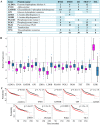
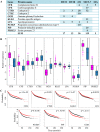
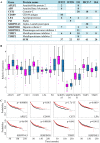
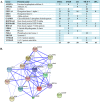
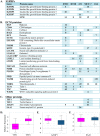

Similar articles
-
Estrogen receptor beta as epigenetic mediator of miR-10b and miR-145 in mammary cancer.Matrix Biol. 2017 Dec;64:94-111. doi: 10.1016/j.matbio.2017.08.002. Epub 2017 Aug 8. Matrix Biol. 2017. PMID: 28797712
-
Proteomics analysis of conditioned media from three breast cancer cell lines: a mine for biomarkers and therapeutic targets.Mol Cell Proteomics. 2007 Nov;6(11):1997-2011. doi: 10.1074/mcp.M600465-MCP200. Epub 2007 Jul 25. Mol Cell Proteomics. 2007. PMID: 17656355
-
Effect of infertility treatment and pregnancy-related hormones on breast cell proliferation in vitro.Hum Reprod. 2012 Jan;27(1):146-52. doi: 10.1093/humrep/der378. Epub 2011 Nov 10. Hum Reprod. 2012. PMID: 22081245 Free PMC article.
-
Markers of circulating breast cancer cells.Adv Clin Chem. 2013;61:175-224. doi: 10.1016/b978-0-12-407680-8.00007-5. Adv Clin Chem. 2013. PMID: 24015603 Review.
-
Cell-free miRNAs as non-invasive biomarkers in breast cancer: Significance in early diagnosis and metastasis prediction.Life Sci. 2020 Apr 1;246:117417. doi: 10.1016/j.lfs.2020.117417. Epub 2020 Feb 7. Life Sci. 2020. PMID: 32044304 Review.
Cited by
-
Shotgun proteomics coupled to nanoparticle-based biomarker enrichment reveals a novel panel of extracellular matrix proteins as candidate serum protein biomarkers for early-stage breast cancer detection.Breast Cancer Res. 2020 Dec 2;22(1):135. doi: 10.1186/s13058-020-01373-9. Breast Cancer Res. 2020. PMID: 33267867 Free PMC article.
-
Proteomic analysis identifies highly expressed plasma membrane proteins for detection and therapeutic targeting of specific breast cancer subtypes.Clin Proteomics. 2018 Sep 19;15:30. doi: 10.1186/s12014-018-9206-0. eCollection 2018. Clin Proteomics. 2018. PMID: 30250408 Free PMC article.
-
Proteins Found in the Triple-Negative Breast Cancer Secretome and Their Therapeutic Potential.Int J Mol Sci. 2023 Jan 20;24(3):2100. doi: 10.3390/ijms24032100. Int J Mol Sci. 2023. PMID: 36768435 Free PMC article. Review.
-
The Inhibition of the FGFR/PI3K/Akt Axis by AZD4547 Disrupts the Proangiogenic Microenvironment and Vasculogenic Mimicry Arising from the Interplay between Endothelial and Triple-Negative Breast Cancer Cells.Int J Mol Sci. 2023 Sep 6;24(18):13770. doi: 10.3390/ijms241813770. Int J Mol Sci. 2023. PMID: 37762073 Free PMC article.
-
Transcriptome profiling and proteomic validation reveals targets of the androgen receptor signaling in the BT-474 breast cancer cell line.Clin Proteomics. 2022 May 14;19(1):14. doi: 10.1186/s12014-022-09352-2. Clin Proteomics. 2022. PMID: 35568821 Free PMC article.
References
MeSH terms
Substances
Grants and funding
LinkOut - more resources
Full Text Sources
Other Literature Sources
Medical
Research Materials
Miscellaneous

